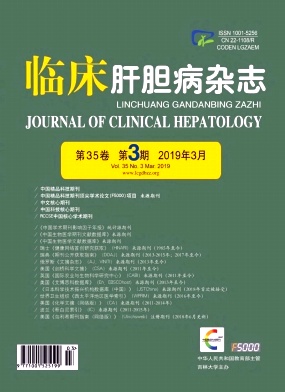|
[1] WALLACE M, PREEN D, JEFFREY G, et al. The evolving epide-miology of hepatocellular carcinoma:A global perspective[J].Expert Rev Gastroenterol Hepatol, 2015, 9 (6) :765-779.
|
|
[2] NAGAPPA M, BINDU PS, CHIPLUNKAR S, et al. Hypersomno-lence-hyperkinetic movement disorder in a child with compoundheterozygous mutation in 4-aminobutyrate aminotransferase (ABAT) gene[J]. Brain Dev, 2017, 39 (2) :161-165.
|
|
[3] ICHIKAWA K, TSUJI M, TSUYUSAKI Y, et al. Serial magneticresonance imaging and1H-magnetic resonance spectrosco-py in GABA transaminase deficiency:A case report[J]. JIMDRep, 2019, 43:7-12.
|
|
[4] BARNBY G, ABBOTT A, SYKES N, et al. Candidate-genescreening and association analysis at the autism-susceptibilitylocus on chromosome 16p:Evidence of association at GRIN2Aand ABAT[J]. Am J Hum Genet, 2005, 76 (6) :950-966.
|
|
[5] BESSE A, WU P, BRUNI F, et al. The GABA transaminase, ABAT, is essential for mitochondrial nucleoside metabolism[J]. Cell Metabolism, 2015, 21 (3) :417-427.
|
|
[6] BESSE A, PETERSEN AK, HUNTER JV, et al. Personalizedmedicine approach confirms a milder case of ABAT deficiency[J]. Mol Brain, 2016, 9 (1) :93.
|
|
[7] De BIASE D, BARRA D, SIMMACO M, et al. Primary structureand tissue distribution of human 4-aminobutyrate aminotrans-ferase[J]. Eur J Biochem, 1995, 227 (1-2) :476-480.
|
|
[8] BUDCZIES J, BROCKMLLER SF, MLLER BM, et al. Com-parative metabolomics of estrogen receptor positive and estro-gen receptor negative breast cancer:Alterations in glutamineand beta-alanine metabolism[J]. J Proteomics, 2013, 94:279-288.
|
|
[9] CHEN P, WANG F, FENG J, et al. Co-expression network a-nalysis identified six hub genes in association with metastasisrisk and prognosis in hepatocellular carcinoma[J]. Oncotar-get, 2017, 8 (30) :48948-48958.
|
|
[10] REIS H, PADDEN J, AHRENS M, et al. Differential proteomicand tissue expression analyses identify valuable diagnostic bi-omarkers of hepatocellular differentiation and hepatoid adeno-carcinomas[J]. Pathology, 2015, 47 (6) :543-550.
|
|
[11] TANG Z, LI C, KANG B, et al. GEPIA:A web server for cancerand normal gene expression profiling and interactive analyses[J]. Nucleic Acids Res, 2017, 45 (W1) :W98-W102.
|
|
[12] HUANG WY, HSU SD, HUANG HY, et al. Meth HC:A data-base of DNA methylation and gene expression in human canc-er[J]. Nucleic Acids Res, 2015, 43 (Database issue) :d856-d861.
|
|
[13] SZKLARCZYK D, MORRIS JH, COOK H, et al. The STRINGdatabase in 2017:Quality-controlled protein-protein associ-ation networks, made broadly accessible[J]. Nucleic AcidsRes, 2017, 45 (D1) :d362-d368.
|
|
[14] UHLEN M, OKSVOLD P, FAGERBERG L, et al. Towards aknowledge-based human protein atlas[J]. Nat Biotechnol, 2010, 28 (12) :1248-1250.
|
|
[15] UHLEN M, FAGERBERG L, HALLSTROM BM, et al. Proteomics.Tissue-based map of the human proteome[J]. Science, 2015, 347 (6220) :1260419.
|
|
[16] MAS VR, MALUF DG, ARCHER KJ, et al. Genes involved inviral carcinogenesis and tumor initiation in hepatitis C virus-in-duced hepatocellular carcinoma[J]. Mol Med, 2009, 15 (3-4) :85-94.
|
|
[17] ROESSLER S, JIA HL, BUDHU A, et al. A unique metastasisgene signature enables prediction of tumor relapse in early-stage hepatocellular carcinoma patients[J]. Cancer Res, 2010, 70 (24) :10202-10212.
|
|
[18] WURMBACH E, CHEN YB, KHITROV G, et al. Genome-widemolecular profiles of HCV-induced dysplasia and hepatocellularcarcinoma[J]. Hepatology, 2007, 45 (4) :938-947.
|
|
[19] WANG FS, FAN JG, ZHANG Z, et al. The global burden ofliver disease:The major impact of China[J]. Hepatology, 2014, 60 (6) :2099-2108.
|
|
[20] HAN K, KIM JH. Transarterial chemoembolization in hepato-cellular carcinoma treatment:Barcelona clinic liver cancerstaging system[J]. World J Gastroenterol, 2015, 21 (36) :10327-10335.
|
|
[21] CILLO U, VITALE A, GRIGOLETTO F, et al. Prospective vali-dation of the Barcelona clinic liver cancer staging system[J].J Hepatol, 2006, 44 (4) :723-731.
|
|
[22] BUDCZIES J, DENKERT C. Tissue-based metabolomics toanalyze the breast cancer metabolome[J]. Recent ResultsCancer Res, 2016, 207:157-175.
|
|
[23] JANSEN MP, SAS L, SIEUWERTS AM, et al. Decreased ex-pression of ABAT and STC2 hallmarks ER-positive inflamma-tory breast cancer and endocrine therapy resistance in ad-vanced disease[J]. Mol Oncol, 2015, 9 (6) :1218-1233.
|
|
[24] AL-WADEI HA, ULLAH MF, AL-WADEI M. GABA (gamma-aminobutyric acid) , a non-protein amino acid counters thebeta-adrenergic cascade-activated oncogenic signaling inpancreatic cancer:A review of experimental evidence[J].Mol Nutr Food Res, 2011, 55 (12) :1745-1758.
|
|
[25] TIAN H, WU JX, SHAN FX, et al. Gamma-aminobutyric acidinduces tumor cells apoptosis via GABABR1·beta-arrestins·JNKs signaling module[J]. Cell Biochem Biophys, 2015, 71 (2) :679-688.
|
|
[26] INADA T, KOGA M, ISHIGURO H, et al. Pathway-based as-sociation analysis of genome-wide screening data suggestthat genes associated with the gamma-aminobutyric acid re-ceptor signaling pathway are involved in neuroleptic-in-duced, treatment-resistant tardive dyskinesia[J]. Pharma-cogenet Genom, 2008, 18 (4) :317-323.
|
|
[27] LI X, ZHANG J, WU X, et al. Polymorphisms of ABAT, SCN2Aand ALDH5A1 may affect valproic acid responses in the treatmentof epilepsy in Chinese[J]. Pharmacogenomics, 2016, 17 (18) :2007-2014.
|
|
[28] PANOSYAN EH, LIN HJ, KOSTER J, et al. In search of drug-gable targets for GBM amino acid metabolism[J]. BMCCancer, 2017, 17 (1) :162.
|
|
[29] LI C, WANG Q, MA J, et al. Integrative pathway analysis ofgenes and metabolites reveals metabolism abnormal subpath-way regions and modules in esophageal squamous cell carci-noma[J]. Molecules, 2017, 22 (10) :1599.
|







 DownLoad:
DownLoad: